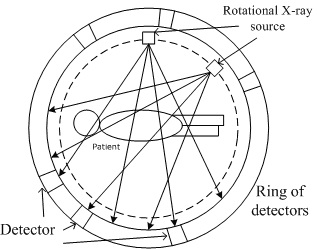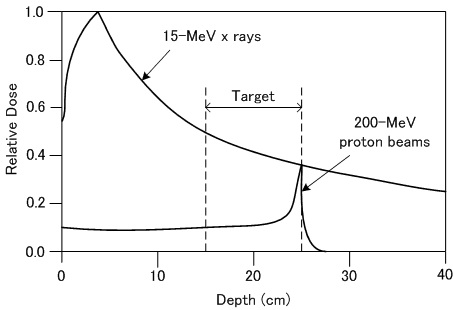Medication and Physics
Quite a few people do not notice how physics is useful in medical science. Some of medical treatments are applications from physics research, such as X-rays, MRI, ultrasound imaging, etc. Mechanics, electromagnetism, and optics also contribute to medication. For example, the theory of torques is used in kinesiology. The fibre scope enables us to look inside human bodies. In addition, nuclear particle physics becomes imoprtant for one of the most beneficial treatments of cancers. Although quite amount of doses give human side of the effect like redioactive contamination, the research outcomes from that physics are necessary to diagnose and medicate diseases. In this page, various topics of medication and physics are introduced.
Medical Devices to Diagnose
Physics and medical diagnostic devices
From macroscopic perspective, each part of the body moves with chemical reactions (atoms and moleculars), which is based on electromagnetic forces. You can say, the parts of human body can be associated with electric circuits. However, if you look into microscopic way, nuclear physics helps you understand how human body works, which is related to protons, neutrons, and nuclear forces.Nuclear physics not only explains mechanism between protons and neutrons but also accounts for radioactive phenomena. The medical treatment utilizing such properties is called nuclear medicine.
Medical diagnostic devices make use of various physics properties of substances interacting with electric and magnetic fields. More specifically, electromagnetic induction, electromagnetic waves and ray optics.
Magnetic resonance imaging
MRI stands for Magnetic Resonance Imaging. This has good capability of obtaining the images for soft tissues. It is also safer than x-rays. The mechanism is following: Human body contains a lot of hydrogen atoms because of water. Hydrogen atoms consist of a lot of protons. The proton has a magnetic property, which is known as spin. Therefore, by applying an external magnetic field to human body, almost all the protons are detected into one direction. This is like iron sands attracted by a bar magnet to be aligned. The protons inside body are alighned by very strong magnetic fields produced with a big coil.

After aligned, the magnetic field gets turned off. Then, each proton tries to go back to the original direction that is called relaxation. This process emits electromagnetic waves and these are received by a special device to see which part of the organ contains more water to diagnose some of disease, such as cancer. That is why MRI takes a longer time to diagnose.
Positron Emission Tomography
PET stands for Positron Emission Tomography. This has a good capability of detecting the specific diseases in the specific organs.
.jpg)
Let's illustrate the procedure. First, ingest radionuclides, which produce positrons, in human body. Then, the patient goes into the detector. The positron and electrons in radioniclides spontaneously emit gamma rays due to pair annihilation. Fianlly, the detector catches them as shown in the figure.

Fluorodeoxyglucose is one of the radionuclides, 18F-FDG, which 18F
collapses and emits positrons:
18F → 18O + e+ + νe
Then, the reaction between the positrons and electrons emits gamma rays as follows:e+ + e- → 2γ
PET diagnoses functioning of organs, but x-rays diagnoses shapes of organs.X-rays and CT
An X-ray is one of electromagnetic waves. The X-rays are absorbed by the dense structure like bones much more than soft tissue. It is safe for human, but radioactive not to be exposed too much amount.
CT stands for computed tomography, which uses X-rays to identify more accurate 2D and 3D images.

Fiberscopes
Fiberscopes contain a flexible fiber-optic bundle with an eyepiece and an objective lens each end. As a medical device, they are used to examine and inspect inside human body. The fiber is made of a special material to have the total internal reflection.

Ultrasonography
Ultrasonography utilizes ultrasonic waves, which are very high frequent sound waves that human cannot hear. A ultrasonography for the cardiovascular system uses the Doppler effect to see the change of blood flow.
Ultrasonography is safer than x-rays because it is not radioactive, but it is less accurate compared with CT and MRI.
Cancer and Tumor Treatments
Photodynamic therapy
The laser is used in otolaryngology, cosmetic surgery, dermatology, etc. It utilizes photocoagulation or transpiration to treat diseases or some issues on skin.
Using laser for cancer treatment, there is PDT that stands for Photodynamic Therapy. It is a topical treatment with photosensitizer approaching in cancer and radiated by laser beam.
This is a treatment with less damage to normal cells because it can be treated with relatively low energy of laser.
Heavy particles (ions) radiotherapy
Besides protons, carbon (12C), neon (20Ne), silicon (28Si), argon (40Ar), etc. can be used for the treatment since the beams produced heavy particles have Bragg peaks.Cyclotron
Heavy particles are defined as particles heavier than helium.
In order to create beams with heavy particles, electric potential and Lorentz force (magnetic force) are used to accelerate. Such equipment is called cyclotron.
.jpg)
A proton is positively charged and attracted to negative potential to be accelerated. Then, the moving proton under magnetic fields gets a perpendicular force known as the Lorentz force. That is why the proton traces a curved path inside the cyclotron.
Bragg peaks
The bragg peak means that the beam gives off a concentrated energy in depth. Therefore, the beam reaches the appropreate position of a tumor with appropreate energy. Furthermore, the beam does not destroy other healthy cells. The energy distribution is shown in the figure.

Cancer teatment with proton beams
The proton beam can also treat following diseases. These cannot be treated by
usual surgery since it might damage other sensitive organs or functions.
and others. For the pdf version,
Medication with Physics (Nuclear Medicine)